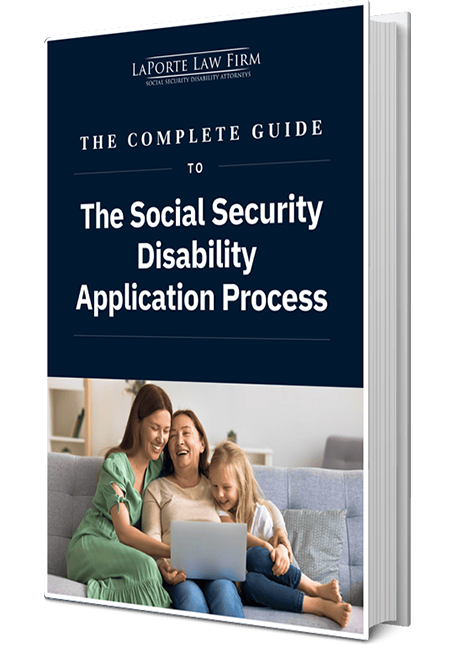
Social Security retirement and Supplemental Security Income (SSI) are two critical programs designed to provide financial support to individuals, yet each serves a distinct purpose and has specific qualification requirements. While Social Security retirement benefits are based on your work history and FICA-taxed contributions, SSI is a needs-based program aimed at helping those with limited income and resources.
Understanding whether these two benefits can be combined is essential for effectively planning your retirement strategy. While it is possible to receive both, there are specific conditions and limitations you must meet. In this article, we will delve into the eligibility criteria, explore the potential for dual benefits, and offer insights to help you make informed decisions about your financial future.
SSI and Social Security Retirement: A Quick Overview
Both SSI and Social Security retirement benefits play vital roles in helping individuals maintain financial stability. This section provides a summary of how each program operates.
Overview of Supplemental Security Income
Supplemental Security Income, or SSI, is a needs-based federal program in the United States that provides monthly payments to individuals who are aged (65 or older), blind, or disabled and who have limited income and resources. Administered by the Social Security Administration (SSA), SSI is designed to help cover basic needs such as food, clothing, and shelter. Eligibility is determined by financial need, and applicants must meet strict income and asset limits. In many states, receiving SSI also automatically qualifies individuals for other assistance programs, such as Medicaid and food assistance.
Overview of Social Security retirement benefits
Social Security retirement benefits are monthly payments provided by the SSA to individuals who have worked and paid into the Social Security system through payroll taxes. The purpose of these benefits is to provide a basic level of financial support to people who have reached retirement age, helping them cover living expenses after they stop working.
To qualify, you must have earned enough “work credits,” which are based on your annual earnings. The amount you receive each month depends on your average earnings over your working years and the age at which you choose to start receiving benefits, with full retirement age currently ranging between 66 and 67, depending on your birth year.
Eligibility Criteria for SSI
SSI is a needs-based program, and eligibility depends on several financial and nonfinancial factors. The following criteria determine whether an individual can receive benefits.
Financial requirements for SSI
Because SSI is based on financial need rather than work history, it provides critical support to people who are unable to qualify for other Social Security programs. Unlike Social Security retirement, you do not need to have worked and paid taxes to qualify for SSI.
To qualify, your total assets, such as money in the bank, property, and other resources, must fall below specific limits set by the SSA. As of 2025, the resource limit is $2,000 for an individual and $3,000 for a couple. In addition to these asset limits, your income must also be very limited, and any income you do have may reduce your monthly SSI benefit.
When applying for SSI, there are strict limits on the amount of income and assets (resources) you can have. However, not everything you own counts toward these limits. There are important exceptions that allow you to keep certain essential items without affecting your eligibility.
For example, the home you live in is not counted as a resource, no matter its value. As long as it is your primary residence, it is excluded from the asset limit. Similarly, one vehicle is also excluded if it is used for transportation, either for yourself or a member of your household. This applies even if the car is valuable. Other common exclusions include household goods and personal items, burial plots, and some life insurance policies (if the total face value is $1,500 or less).
For income, not all the money you receive is counted. For example, a small portion of earned income, such as certain assistance from government programs, and help from nonprofit organizations, may be excluded. These exclusions help ensure that people can still meet basic needs such as housing and transportation while receiving SSI benefits.
Other qualifying criteria for SSI
SSI is available for the aged, blind, and disabled. The “aged” requirement for SSI means that you can qualify for benefits simply based on your age, meaning you must be 65 or older. If you meet this age requirement, you do not need to be blind or disabled to receive SSI.
You will be considered legally blind (or “statutorily blind”) under the law for SSI benefits if your vision is 20/200 or worse in your better eye, even with glasses or contact lenses. You can also be considered blind if your field of vision is very limited, meaning you can only see within a 20-degree range, even if your central vision is better than 20/200. While blindness on its own is not typically life-threatening, some underlying medical conditions that lead to blindness — such as brain tumors, advanced diabetes, or severe infections — may also result in death. In such cases, if the condition does not meet the SSA’s definition of statutory blindness, it must still be expected to last at least 12 months or result in death to qualify for disability benefits.
For individuals under the age of 65 applying for SSI, they must be found disabled according to the SSA’s definition. This means they must have a severe physical or mental impairment that significantly limits their ability to perform basic work activities and prevents them from doing not only their past relevant work but also any other type of substantial gainful work activity. The disability must be expected to last at least 12 months or result in death. To prove this, the applicant must provide medical treatment records and other documentation that clearly show the nature and extent of the impairment. These records are essential to demonstrate that the condition is severe enough to meet the SSA’s criteria for disability.
Impact of income and assets on SSI eligibility
The SSI disability benefit amount is not based on your work history or how much you’ve paid into the system. Instead, it starts with a federal base amount, which is set each year by the Social Security Administration. In 2025, the maximum federal SSI payment is $967 per month for an individual and $1,450 per month for a couple.
Some states also provide an additional state supplement to the federal amount, which can increase your total monthly benefit. In California in 2025, the maximum federal SSI payment is $1,206.94 per month for an individual and $2,057.83 per month for a couple. Your final monthly SSI payment is the federal amount plus any state supplement, minus any countable income.
However, the amount you actually receive may be lower, depending on your countable income. The SSA looks at the money and support you receive, such as wages, pensions, or help from friends or family, and subtracts that from the maximum benefit. Some types of income are excluded, such as the first $20 of most income, and the first $65 of earned income plus half of any earnings over that amount.
Eligibility Criteria for Social Security Retirement
Social Security retirement benefits are available to individuals who meet established eligibility guidelines. Here are the primary requirements you need to fulfill to qualify.
Retirement age
Social Security retirement benefits are available to those who reach retirement age, or the age at which you are eligible to start receiving Social Security retirement benefits. However, the amount you receive depends on when you choose to start collecting those benefits, and there are three key categories: early retirement, full retirement, and delayed retirement.
- Full retirement age (FRA): This is the age at which you are entitled to receive 100% of your Social Security retirement benefit based on your earnings record. Your FRA depends on your birth year. For example, if you were born in 1960 or later, your full retirement age is 67. If you were born earlier, your FRA may be slightly lower, such as 66 or 66 and a few months.
- Early retirement: You can start receiving Social Security retirement benefits as early as age 62, but if you retire before your full retirement age, your monthly benefit will be permanently reduced. The reduction is based on how many months early you claim benefits. For example, if your FRA is 67 and you retire at 62, your benefit could be reduced by as much as 30%.
- Delayed retirement: If you delay taking your retirement benefits past your full retirement age, you can earn delayed retirement credits, which increase your monthly benefit. These credits grow by about 8% per year up until age 70. After 70, there’s no further increase, so most people begin collecting by then.
Work credits and benefit amount
Work credits are the building blocks used to determine your eligibility for Social Security retirement benefits. You earn work credits by working and paying Social Security taxes (FICA). In 2025, you earn one credit for every $1,810 in covered earnings, up to a maximum of four credits per year. To qualify for Social Security retirement benefits, you generally need to have earned 40 credits, which usually means about 10 years of work. These credits don’t have to be consecutive; you just need to have accumulated 40 credits over your working lifetime.
Once you have enough work credits and reach the eligible age (starting at 62 for early retirement), you can apply for retirement benefits. The amount you receive depends on your earnings history, age at claim, and your primary insurance amount (PIA), but having the required work credits is the first step to becoming eligible.
Social Security retirement benefits are calculated based on your lifetime earnings, adjusted for inflation, and the age at which you begin claiming. The SSA first indexes your earnings to reflect changes in average wages over time, then calculates your average indexed monthly earnings (AIME) by averaging your 35 highest-earning years. Your PIA, or the amount you’d receive at full retirement age, is determined using a formula that applies different percentage rates to portions of your AIME, known as “bend points.”
For example, in 2025, if your AIME is $5,556, the PIA is calculated as 90% of the first $1,226 plus 32% of the amount between $1,226 and $5,556, resulting in a benefit of $2,489. For someone with a higher AIME of $11,351, the PIA is 90% of the first $996, plus 32% of the amount between $996 and $6,002, plus 15% of the amount over $6,002, totaling $3,300.67. This PIA represents the monthly benefit you would receive at full retirement age before any adjustments for early or delayed claiming.
Key Differences Between SSI and Social Security Retirement
SSI and Social Security retirement benefits are both administered by the Social Security Administration, but they are very different programs in terms of funding, eligibility, and how benefits are calculated.
Eligibility requirements
To qualify for Social Security retirement benefits, you must have a sufficient work history, measured in work credits. Most people need 40 credits, which usually takes about 10 years of work. You must also be at least age 62 to begin receiving benefits, although the amount you receive depends on the age you retire.
In contrast, SSI does not require any work history. Instead, eligibility is based on age (65+), disability, or blindness, along with limited income and assets. To qualify for SSI, you must meet strict financial limits, generally no more than $2,000 in assets for an individual or $3,000 for a couple.
Funding sources
The biggest difference between the two programs is how they are funded. Social Security retirement benefits are funded through payroll taxes collected under the Federal Insurance Contributions Act (FICA). Workers and employers each pay a percentage of wages into the Social Security trust fund, which is then used to provide retirement, disability, and survivor benefits.
On the other hand, SSI is not funded by payroll taxes. Instead, it is funded by general tax revenues from the US Treasury. This means SSI is a welfare-based program, while Social Security retirement is an earned benefit based on work history.
Benefit calculations
The amount you receive from Social Security retirement is based on your average lifetime earnings during your working years. The SSA uses your 35 highest-earning years (adjusted for inflation) to calculate your monthly benefit, and the amount is higher the longer you delay retirement up to age 70.
Meanwhile, SSI payments are fixed and do not depend on work history. SSI benefits are determined by a federal base rate (which can be supplemented by some states), and your benefit may be reduced if you have other sources of income. As of 2025, the maximum federal SSI payment is around $967 per month for an individual, but that amount can vary depending on your financial situation and state of residence.
Can You Collect SSI While Receiving Social Security Retirement?
It is possible to receive both SSI and Social Security retirement benefits at the same time because they serve different purposes and have different eligibility rules. However, because SSI is designed to supplement your income, the amount you receive from SSI will be reduced by the amount of your Social Security retirement benefits and any other income you have.
For example, if your monthly retirement benefit is below the SSI maximum, SSI can make up the difference to bring your total income up to the federal benefit level. This coordination helps ensure that people with limited means receive enough support, while avoiding duplication of benefits.
The Interaction of SSI and Social Security Retirement
If you’re receiving both SSI and retirement benefits, it’s important to know how they affect one another and how their interaction impacts your total benefits.
Financial impact on individuals and households
You can qualify for both SSI and Social Security retirement benefits, but your SSI payment may be reduced, or even eliminated, depending on how much you receive in retirement benefits. Because SSI is a needs-based program, any unearned income, including Social Security, will generally reduce your SSI payment after the first $20 is excluded.
For example, someone receiving the full SSI benefit of $943 per month begins collecting $500 per month in Social Security retirement benefits. After subtracting the $20 exclusion, $480 counts as income, which reduces the SSI payment to $463. The person’s new total monthly income becomes $963 — higher than before, but with a lower SSI amount.
In another case, a person who worked low-wage jobs for many years qualifies for $300 per month in retirement benefits. After applying the $20 exclusion, $280 counts toward their income, reducing their SSI payment to $663. The combined total is again $963 per month, made up of both Social Security and SSI.
Someone else who has been receiving $800 per month in Social Security retirement but struggles to meet basic needs may apply for SSI. After excluding $20, $780 of their income is counted, leaving them potentially eligible for $163 in SSI, provided they meet the program’s asset limits. Once approved, their total monthly income would be $963.
It’s important to understand that if your Social Security retirement benefit is higher than the maximum SSI amount ($943 in 2025), you typically won’t qualify for SSI at all. Also, SSI has strict resource limits: $2,000 for individuals and $3,000 for couples. When a person receives both benefits at the same time, they’re considered a concurrent beneficiary.
Strategies for maximizing benefits
When planning to claim Social Security retirement benefits while receiving or applying for Supplemental Security Income, timing is critical to preserving SSI eligibility and maximizing total income.
As we’ve said, SSI is a needs-based program, so any Social Security retirement income you receive may reduce or eliminate your SSI payments. Delaying retirement benefits, especially until full retirement age, can help preserve your SSI longer and increase your future Social Security payments, potentially reducing your long-term reliance on SSI. If you’re already receiving SSI and you qualify for a small Social Security retirement benefit, delaying the start of your retirement claim can help you keep your full SSI payment longer. This may make sense if you don’t urgently need the additional income and you want to avoid a significant drop in SSI benefits before it’s necessary. Delaying the start of your retirement claim and waiting to claim benefits at your full retirement age will avoid the early reduction.
It’s also important to consider that receiving a lump sum from retroactive benefits could temporarily push you over SSI’s strict resource limits, leading to a loss of benefits or overpayment issues. In addition, losing SSI may affect other benefits tied to it, such as automatic Medicaid eligibility in many states.
To navigate these complexities and avoid unintended consequences, it’s strongly recommended to consult with a Social Security attorney, legal aid organization, or benefits specialist before making any decisions about when to claim retirement benefits. LaPorte Law Firm offers expert legal support to help you make informed choices. Get in touch with us today to learn how we can assist you.
FAQs
Since SSI is a needs-based program, any Social Security income you receive is considered unearned income and will typically reduce your SSI payment dollar for dollar after the first $20 is excluded. If your retirement benefit is low enough, you may still qualify for a partial SSI payment to supplement your income. But if your Social Security retirement benefit exceeds the maximum SSI federal benefit (which is $943/month for individuals in 2025), you will usually become ineligible for SSI.
To remain eligible for SSI while receiving Social Security, you must also keep your resources under the SSI limit ($2,000 for individuals or $3,000 for couples), and you must continue to meet the age or disability requirements for SSI.
Receiving both SSI and Social Security retirement benefits typically has little to no impact on your overall income tax liability. However, it depends on your total income and filing status.
Generally, SSI is never taxable, regardless of how much you receive or any other income you have. On the other hand, your Social Security retirement benefit may be taxable, but only if your total income exceeds certain thresholds. Your Social Security retirement benefits may be taxable if your combined income, which includes your adjusted gross income, nontaxable interest, and half of your Social Security benefits, exceeds certain limits.
For individuals, benefits may be taxed if the combined income is over $25,000, and up to 85% may be taxed if it’s over $34,000. For married couples filing jointly, the thresholds are $32,000 and $44,000.
















